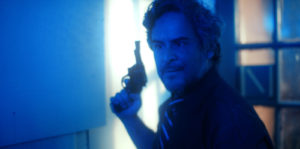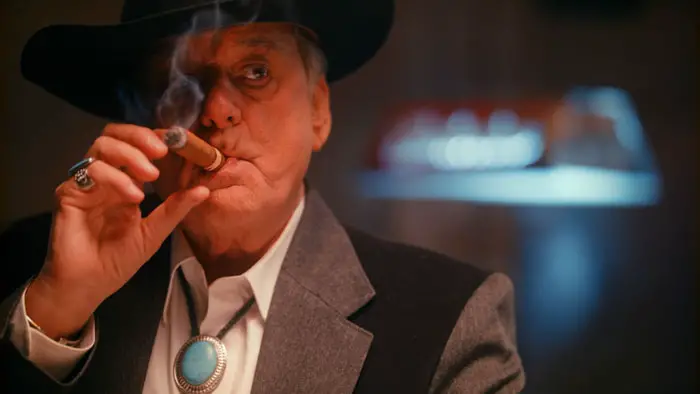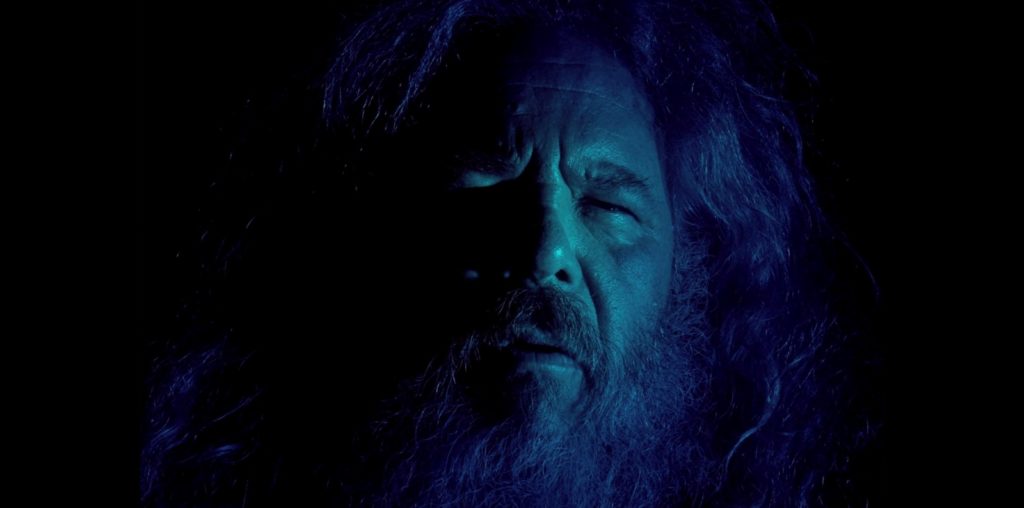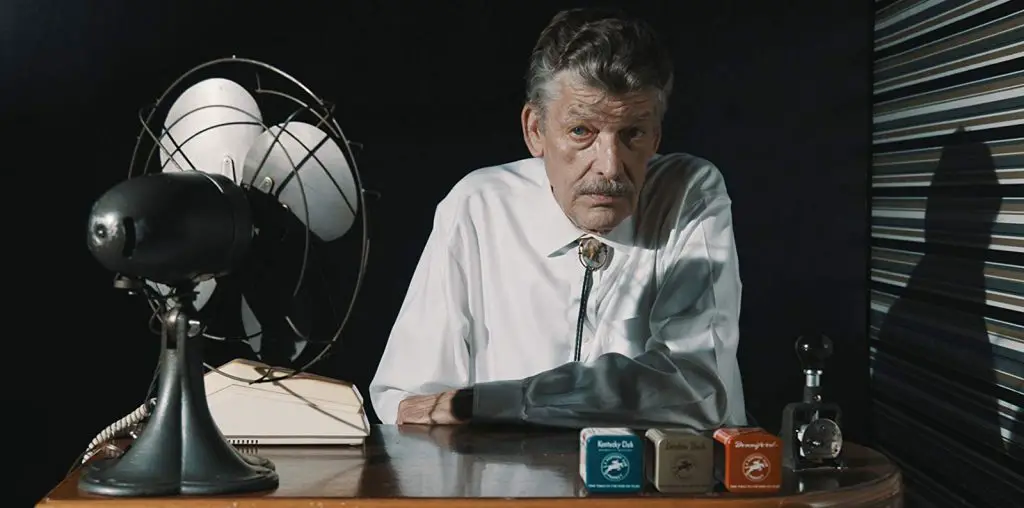
The details caught while shooting this in Shawnee, Oklahoma, are awesome. There is this one factory with a sign on it saying “Peanuts Are,” and that’s it. To mess with your head further, the filmmaker employs a synthesizer score by Kerly Vallejo. Anyone looking for that peculiar sentimental Generation X grease will find buckets of it here. Of particular note are the songs on the soundtrack by Phosphor and Drift. They each have an ethereal feel and are of surprisingly high quality. There is also a very heavy David Lynch influence in the sound design by Stephen Tackett and Cole Tessier. The eerie ambient noise enriches many scenes, though it does break into surreal territory in the bank scene.
Many other tools from Lynch’s toolbox are put to good use here throughout Neon Cactus. There are close-ups of elevator gears moving and cigarette lighter flames. There is also this spooky dude in a flesh mask with a fedora and a knife that operates the elevator at the bar. That these touches enrich the material instead of feeling derivative shows more proof of Lynch being the most innovative director since Hitchcock.

“…one of the best neo-noirs in recent memory.”
Zudhi also resurrects some filmmaking methods of yesteryear that we don’t see used anymore. I am most impressed with his use of superimpositions to express inner emotion. There is one juicy sequence where an image of Stan smoking is overlaid with a picture of the business card. Then it bursts into flames when an image of a big cigar getting lit also appears. It is an old trick that increases the work’s retro appeal and depth. Other instances with sped-up camera movements are great as well.
However, I found the constant onscreen titles tiresome. Also, while I support starting a movie with cinematic self-references like De Palma did, starting Neon Cactus with the director calling action offscreen just makes it seem shoddy. It is like trying to find a way to make a boom mike in the shot seem creative. It also would stop some viewers from proceeding to find out how wonderful the script is, which has more twists than a Sit-and-Spin. Now that’s retro.
By the midway point, I could not guess where things would end up. The climax is a little understated, but it doesn’t stop this ghost train from getting to the station. Neon Cactus is one of the best neo-noirs in recent memory. It is also a full-blown Lite-Brite retro feast.

"…resurrects some filmmaking methods of yesteryear..."


